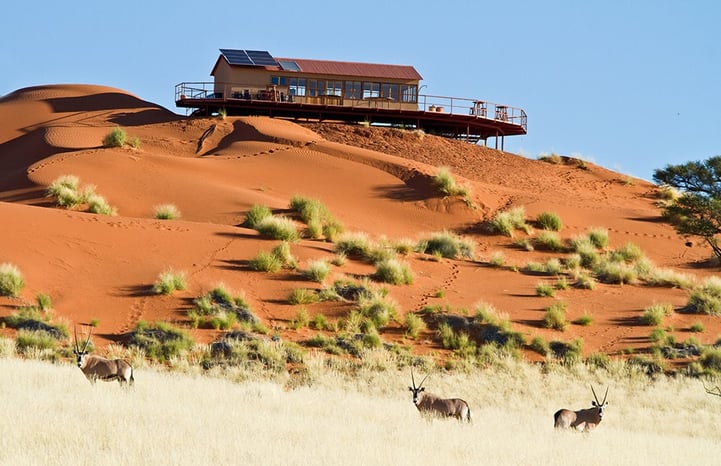How does the Dancing White Lady spider find its way back to its den in an almost straight line after hours of zigzagging about? What can we do to prevent deserts from spreading? And above all, where do we get answers to such interesting and vital questions?
The last question can easily be answered: some 100 kilometres southeast of the coastal town of Walvis Bay, at the Gobabeb Desert Research Station on the northern bank of the Kuiseb River. Established in 1962, it is visited by more than a hundred scientists each year who conduct research projects on site or avail themselves of the specialised literature. With more than 20,000 publications and 30 journals Gobabeb is the most significant information centre worldwide on the subject of the Namib Desert and arid areas in general.
Gobabeb not only conducts research, however, but also provides training, hence the official name “Gobabeb Research and Training Centre”. Some 2000 students and pupils flock to the station every year to learn about the desert world. The programme raises young people’s awareness of the fragile ecosystems in arid areas and strives to find practical solutions for the problem of desertification that affects many people in a life-threatening way. Furthermore, the research station is experimenting with environmentally friendly technologies.
 Gobabeb has more than earned the sheet of three stamps that NamPost issued in 2012 on the occasion its 50-year jubilee. Source: Nampost, artist: Anja Denker
Gobabeb has more than earned the sheet of three stamps that NamPost issued in 2012 on the occasion its 50-year jubilee. Source: Nampost, artist: Anja Denker
The location for the station was carefully chosen. Gobabeb is situated on the bank of Kuiseb River which separates the sandsea in the south from the gravel plains in the north. Thus the station has three significant desert habitats right on its doorstep. The area is part of the Namib-Naukluft Park and therefore protected.
At Gobabeb water is available from three sources: rain, fog and the river. There is not much of any of it, however. Average annual rainfall is about 25 millimetres, but this is very irregular and patchy and some years there is not a single drop of rain.
This explains why the research projects as e.g. the generation of water largely aim at results with functional applications. Furthermore, the research station is experimenting with environmentally friendly technologies. More than 90 percent of electricity and hot water needs are met by solar energy. The the kitchen uses two solar cookers
All of this shows that Gobabeb is three things in one: research station, educational centre and model showcase for man’s sustainable utilisation of scarce natural resources.
Do you want to explore the Namib Desert? Visit the Namib Dune Star Camp for an out of this world desert experience.






SUBMIT YOUR COMMENT